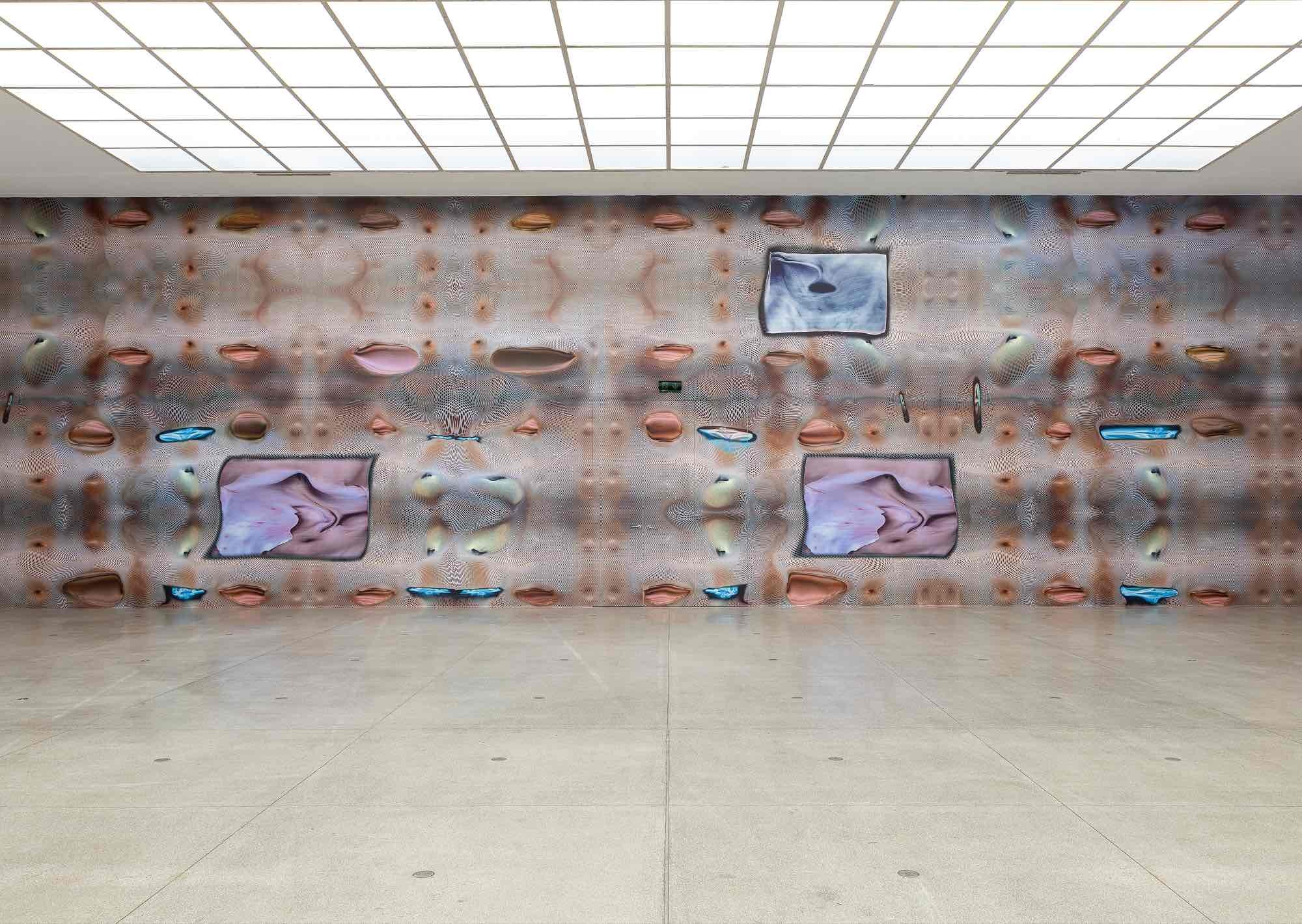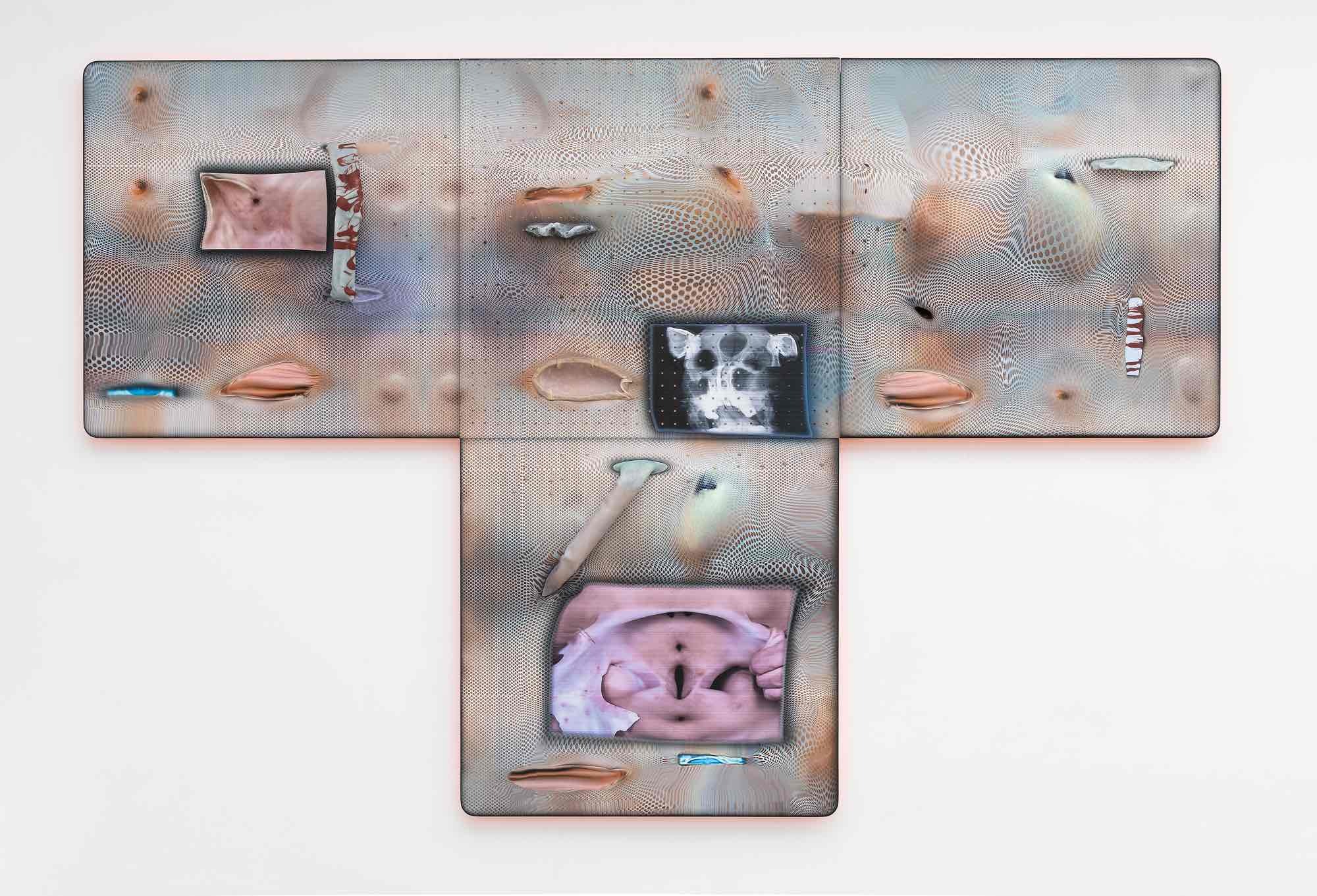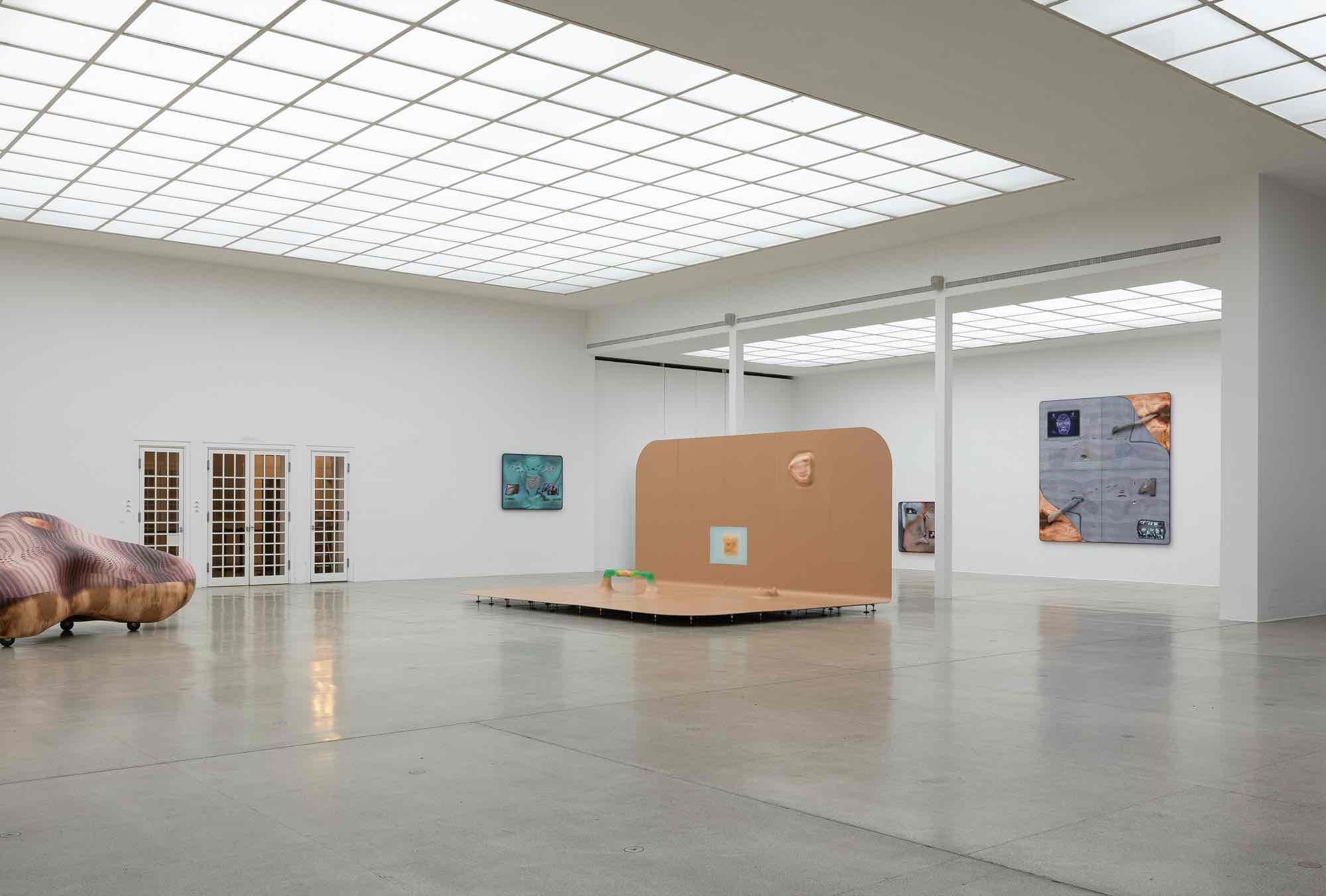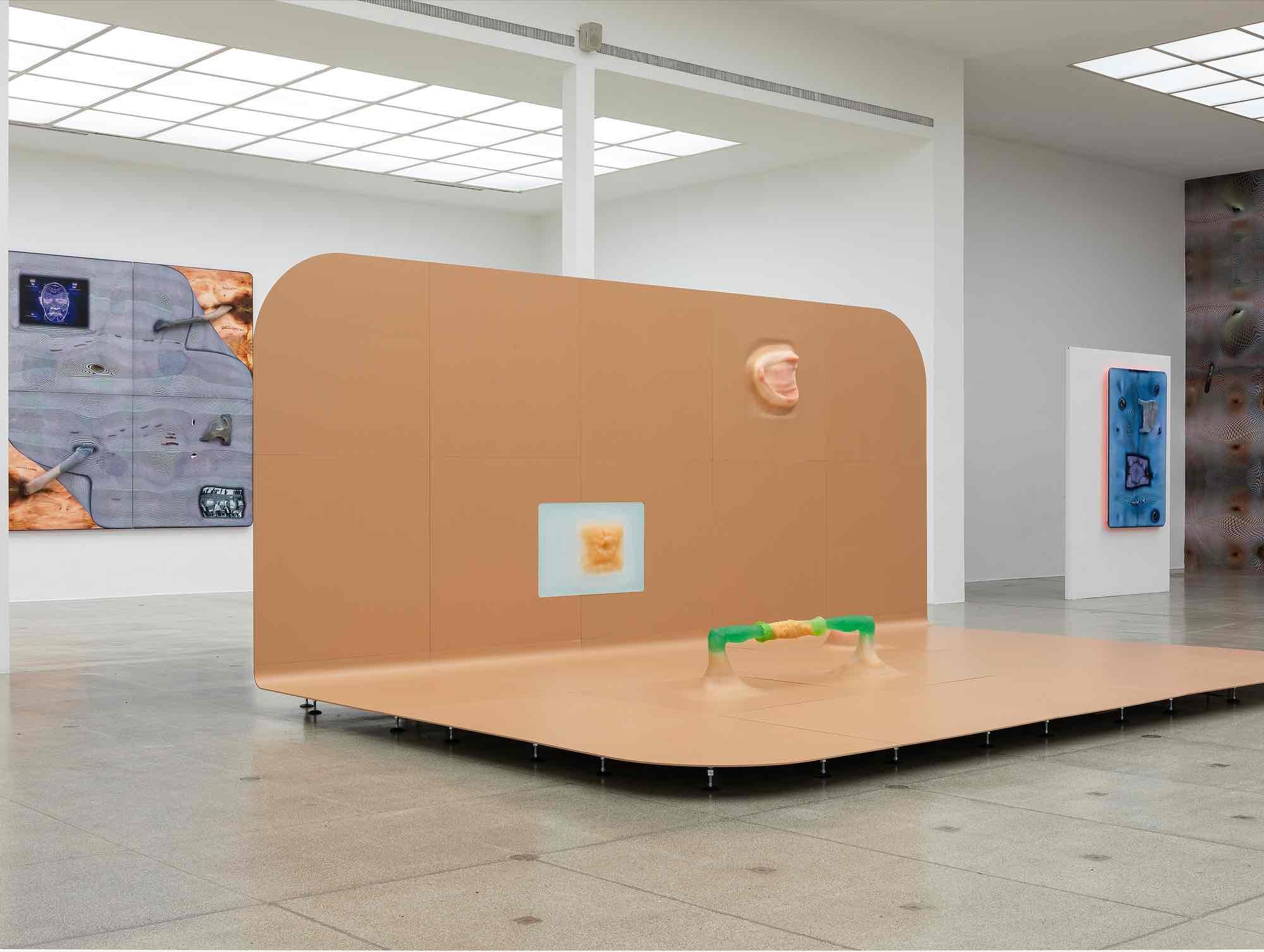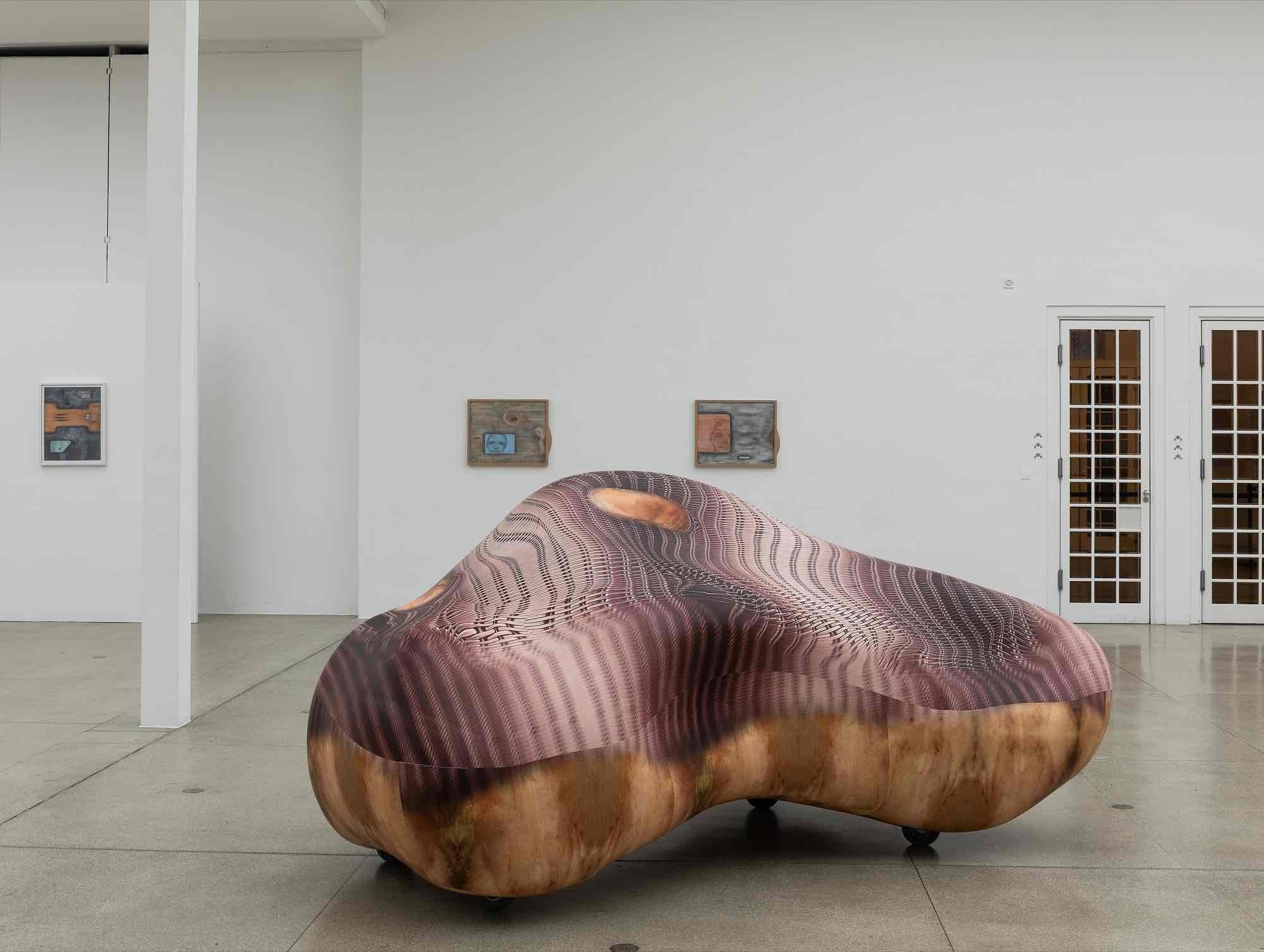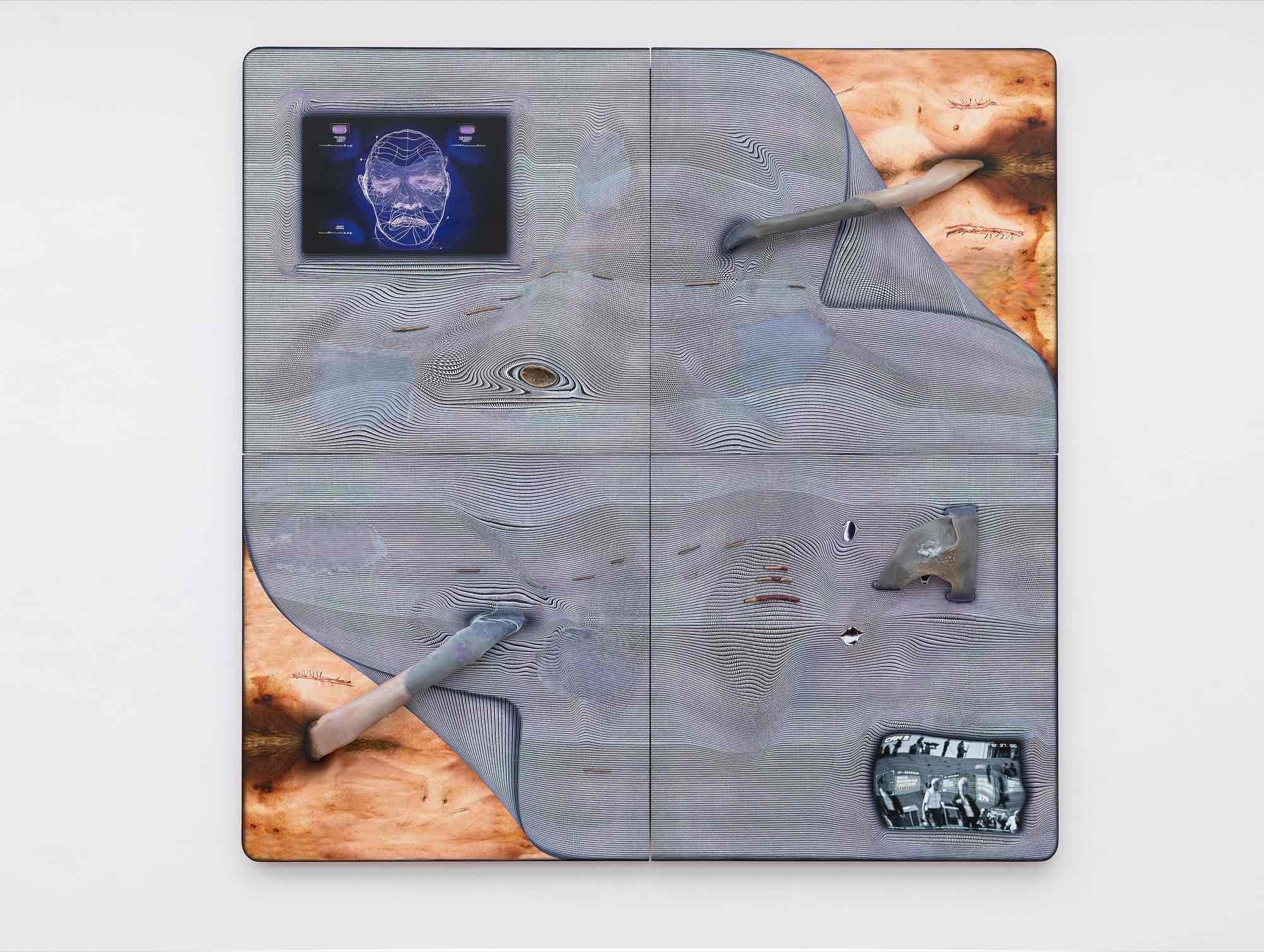Tishan Hsu
recent work 2023
01 Dec 2023 - 11 Feb 2024
My concerns in the work were about the body and technology; it was very simple. Many people asked me if I was trying to imagine a future. I felt I was responding to what I saw in the present. (Tishan Hsu)
Titled recent work 2023, the American artist Tishan Hsu’s exhibition at the Secession consists entirely of new works. After his first major retrospective, which opened at the Hammer Museum in Los Angeles in 2020 and then traveled to the SculptureCenter in New York, where Hsu lives, the artist’s work was prominently featured in the central exhibition The Milk of Dreams at the 59th Venice Biennale in 2022. For last year’s Carnegie International, he conceived several large-scale sculptures; the sculptures he now presents at the Secession elaborate on the ideas they articulate. Taken together, these three major exhibitions in recent years threw Hsu’s creative evolution over the past four decades into relief, illustrating both his changing choices of techniques and materials and his methodological constancy and persistent pursuit of key concerns.
Hsu’s preoccupation with the body in a world of technology dates back to the 1980s. How bodies and consciousness change in the interaction with digital technology is a question he has insistently probed. Hsu’s insights into the interpenetration of human and technology have proven visionary; science fiction anticipated its culmination in the hybrid existence of the cyborg, but it left few traces in the art of the 1980s. Hsu, who studied architecture at the renowned Massachusetts Institute of Technology in Cambridge, moved to New York in the early 1980s and started exhibiting his art. His training at MIT with its culture of innovation and research into the technologies of the future was formative for Hsu, who is still eager to adopt novel technologies and integrate them into his creative practice. Meanwhile, he retains classical “handmade” techniques and processes and cherishes the deliberate slowness of artistic production. Hsu’s works are always both—manufactured in a traditional practice and involving cutting-edge processes.
His open-mindedness and embrace of experimentation are reflected in the diversity of media in the exhibition. The large sculpture tablet-skin-screen’s form derives from the shape of an open laptop computer; planned down to the smallest detail by the artist, it was industrially manufactured out of metal modules and incorporates body casts made of translucent acrylic. The sculpture’s flesh-toned surface coating gestures toward the fusion of human and digital interface. To Hsu, the world that surrounds us is like a matrix out of which everything can emerge anywhere—pictorial compositions combining digital patterns with silicone casts of human or animal body parts grow from the walls, Car-Body appears to hover in the air in the gallery, and one wall is lined with a digital pattern wallpaper that reprises forms from the pictures. A LED video wall shows the unconstrained ongoing transformation of digitally generated forms, accompanied by an ambient sound that fills the room. The interpenetration of physical bodies with virtual digital forms that Hsu’s oeuvre explores and visualizes is reflected by titles like screen-body-data, pig ear-screen-skin 2, grass-screen-skin / object 3, double-breath-green-2, and Breath 9, whose descriptive and enumerative quality recalls scientific experimental series. The numbers suggest the works’ iterative character: they are versions and mutations rather than singular manifestations.
Curated by Bettina Spörr
Titled recent work 2023, the American artist Tishan Hsu’s exhibition at the Secession consists entirely of new works. After his first major retrospective, which opened at the Hammer Museum in Los Angeles in 2020 and then traveled to the SculptureCenter in New York, where Hsu lives, the artist’s work was prominently featured in the central exhibition The Milk of Dreams at the 59th Venice Biennale in 2022. For last year’s Carnegie International, he conceived several large-scale sculptures; the sculptures he now presents at the Secession elaborate on the ideas they articulate. Taken together, these three major exhibitions in recent years threw Hsu’s creative evolution over the past four decades into relief, illustrating both his changing choices of techniques and materials and his methodological constancy and persistent pursuit of key concerns.
Hsu’s preoccupation with the body in a world of technology dates back to the 1980s. How bodies and consciousness change in the interaction with digital technology is a question he has insistently probed. Hsu’s insights into the interpenetration of human and technology have proven visionary; science fiction anticipated its culmination in the hybrid existence of the cyborg, but it left few traces in the art of the 1980s. Hsu, who studied architecture at the renowned Massachusetts Institute of Technology in Cambridge, moved to New York in the early 1980s and started exhibiting his art. His training at MIT with its culture of innovation and research into the technologies of the future was formative for Hsu, who is still eager to adopt novel technologies and integrate them into his creative practice. Meanwhile, he retains classical “handmade” techniques and processes and cherishes the deliberate slowness of artistic production. Hsu’s works are always both—manufactured in a traditional practice and involving cutting-edge processes.
His open-mindedness and embrace of experimentation are reflected in the diversity of media in the exhibition. The large sculpture tablet-skin-screen’s form derives from the shape of an open laptop computer; planned down to the smallest detail by the artist, it was industrially manufactured out of metal modules and incorporates body casts made of translucent acrylic. The sculpture’s flesh-toned surface coating gestures toward the fusion of human and digital interface. To Hsu, the world that surrounds us is like a matrix out of which everything can emerge anywhere—pictorial compositions combining digital patterns with silicone casts of human or animal body parts grow from the walls, Car-Body appears to hover in the air in the gallery, and one wall is lined with a digital pattern wallpaper that reprises forms from the pictures. A LED video wall shows the unconstrained ongoing transformation of digitally generated forms, accompanied by an ambient sound that fills the room. The interpenetration of physical bodies with virtual digital forms that Hsu’s oeuvre explores and visualizes is reflected by titles like screen-body-data, pig ear-screen-skin 2, grass-screen-skin / object 3, double-breath-green-2, and Breath 9, whose descriptive and enumerative quality recalls scientific experimental series. The numbers suggest the works’ iterative character: they are versions and mutations rather than singular manifestations.
Curated by Bettina Spörr

